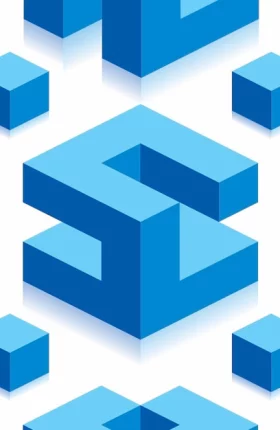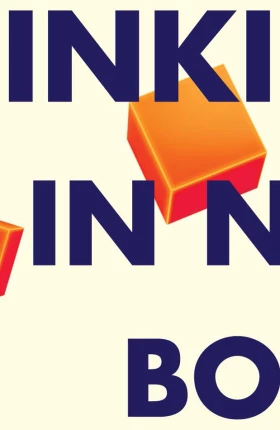Thinking creatively about the future requires sensitivity to the complex, fast-moving world in front of you, the ability to anticipate unexpected disruptions, and a willingness to constantly reevaluate your most basic beliefs and assumptions. Done well, we believe thinking creatively about the future of organizations requires doing three things:
First, understand how people think.
The brain’s hard-wiring could be leading you and your colleagues to hold on to tired assumptions and misperceptions about your organization. People have a natural bias toward ideas and concepts that confirm, as opposed to contradict, ideas they already believe. Such biases can sabotage their capacity for fresh thinking.
A classic example: Henry Ford famously insisted that the all-black Model T would always remain desirable to consumers. Even as other automakers created new car models and colors, even when his colleagues urged him to consider pursuing new directions, Ford refused to budge. After years of fantastic innovations that helped bring the automobile to the masses, Ford fell prey to the “anchoring” bias that leads people to make (or fail to make) new decisions by referencing their prior experiences.
Free your mind to generate new ideas by noticing how these and other cognitive patterns may be shaping your key assumptions and holding you back from thinking in more creative ways.
When thinking about the future of your organization, you and your colleagues must feel encouraged to doubt whether “the way we do things here at X Corp.” is necessarily still relevant. Insist upon a culture that allows people to constantly challenge the most fundamental beliefs, hypotheses, and assumptions that they have about your organization, the industry in which it does business, and the world in which it operates.
Second, think creatively by developing new mental models; audit—and then question—your organization’s fundamental beliefs and assumptions.
To think creatively is to change the way you look at something, to update one or more of your mental models. To get started, drill down on some of the most important mental models that you and your colleagues are currently using. Consider conducting a “beliefs audit.” By interviewing or surveying your colleagues, you can probe their thoughts about your organization’s current situation:
- What are some key assumptions inherent in your day-to-day activities? The established “rules” under which you or your organization generally operates? What core values are “given”?
- What are some of your own personal beliefs about your organization and what makes it perform effectively at present? In what areas does your organization devote too much—or too little—time and resources?
- What is your organization’s competitive space, and are there ways it might be redefined?
- If you or your organization didn’t exist, what difference would it make to the world? What would be missing?
These are only sample questions—you should develop others based on the current needs of your organization.
Questioning your current situation can open up paths to creative thinking. For instance, Google’s original aspiration was to build the best search engine ever; arguably the organization achieved that. But in order to enter a new era of growth, Google leaders needed to perceive their company differently. Only when they challenged their long-held assumption that “We are a search engine company” could they then come up with the “We want to know everything” notion, which sparked projects such as Google Earth, Google Book Search, and Google Labs, along with further improvements to their fabled search engine.
Third, think creatively about the future by using “prospective thinking” to consider key trends and disruptions.
Take an expansive, long-term view, open to all possibilities and fully aware of what’s happening both within and outside of your organization or your immediate environment.
Megatrends, large social, economic, political, environmental, or technological changes likely to have major impact across a wide range of areas, can be a very useful tool to help spark new possibilities. Examples include the rise of alternative energy sources, rapidly developing markets like Brazil and China, and increasing mobile connectivity. Megatrends will affect your company, your customers, your competition, as well as your family and community.
Develop a list of issues you believe will likely play out over a relatively long period of time (five to ten years, say, though different industries could have longer or shorter timeframes); have a strong and wide-reaching impact; and open up a range of strategic responses on your part. Then, refine your list by asking: Which trends will be the key vectors for shaping my organization’s future? What are some of the seemingly irrelevant trends that could end up being surprisingly critical?
Ponder the many ways you could exploit these megatrends to create new opportunities for your organization. Stretch your thinking by considering which of these trends your organization would be the least ready to deal with. Are there trends right in front of you that you haven’t yet addressed?
Ask yourself how these potential trends could influence the new ideas you want to generate for the future. For example, a client we worked with several years ago, a major European department-store chain, stated emphatically that its future was in China, based on trends outlining the increased purchasing power of the rising middle class there. But not a single person on the leadership team had heard of TaoBao, the closest Chinese analogue to Amazon.com, which was growing at double-digit rates, building new distribution centers across the country, and focusing on customer relationships and loyalty.
Thinking creatively about the future is not only about gathering the trend data but maintaining the atmosphere of doubt cultivated in the first step. This will enable you to look at data—whether trends, customer research, or competitive intelligence—in fresh ways, to be better prepared for an uncertain future. Indeed, thinking creatively about the future means embracing the uncertainty, rather than the more predictable response of trying to remove it.
This commentary originally appeared on HBR.org .







